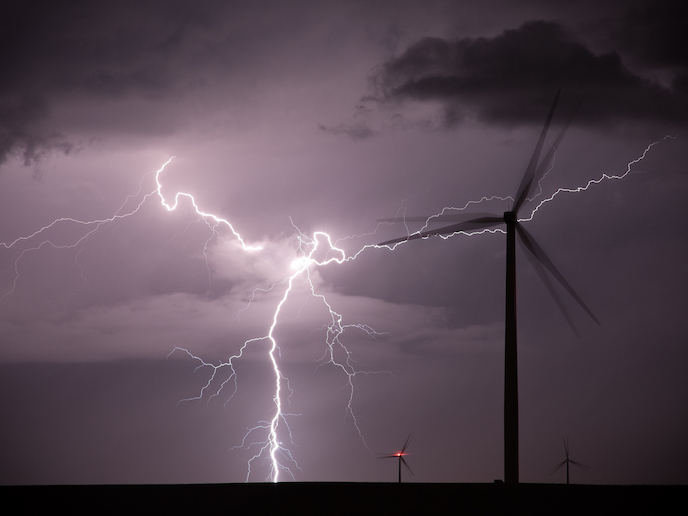Better protection for wind turbine blades from lightning strikes
The remote locations of many wind turbines, (WTs) makes maintenance and repair expensive and logistically challenging, especially for offshore. A significant cause of damage is lightning strikes, a problem compounded by increasing WT size. A single instance of lightning bolt damage to a blade will take the entire turbine out of operation. The EU’s SME support enabled the LIBI (Lighting Interception Blade Implant) project to further develop, test, certify and bring to market a lightning protection system (LPS) – the LIBI – suitable for manufacturers, sub-suppliers and plant operators. The result has been over 30 adaptations of the generic LPS concept to meet the specifications of customers. High-performing and ready to install As lightning damage, alongside leading edge erosion, is the dominant risk in WT blade operations, all WT blade manufacturers are required to install an LPS. Traditionally, manufacturers have used in-house solutions, which are labour-intensive and expensive, given that LPS development cycles can be several months. Additionally, LPS are complex when factoring in materials, processes, manufacturing, weight, time and cost requirements. “Based on our customer experience, and after testing many designs in our lab, we found that traditional LPS were too complex, depended on the skills of installation technicians and with each new blade design require a new LPS,” says project coordinator, Dr Soren Madsen. “So we decided to invent a generic, pre-tested and pre-certified system, which just needs a simple adaption for each blade design.” LIBI is an implant which is embedded into the blade structure to ensure 100 % lightning strike interception effectiveness. The tip of the LIBI extends to the blade tip, which together with the first pair of side receptors (approximately 1m from the tip) provides attachment points for lightning strikes. Once the LIBI is struck, the current travels via a down conductor (high-voltage cable for the first 10-15m, conventional cable thereafter) inside the blade to the blade root. The insulation encasing the internal metal parts ensures that the initial discharges cannot attach through the blade shell, minimising blade failure. Over half of the work is typically done up front in the factory, making the process faster, while ensuring consistent and high manufacturing quality. The system can also be retrofitted for blades with insufficient lightning protection, or blades already damaged by lightning. Both new blade and retrofit solutions have been certified. Green energy incentives The LIBI will drastically reduce WT downtime due to lightning damage, increasing production, while reducing the cost of wind power – creating incentives to replace coal-fired plants with green wind energy. “We strongly believe that LIBI is an important step to make modern wind energy more competitive, to the benefit of all the planet’s citizens,” says Dr Madsen. All the mandatory verification tests (required by the International Electrotechnical Commission (IEC 61400-24 Ed2)) have been conducted, including two high voltage tests to determine capture efficiency and two high current tests checking for arc root erosion on the receptors, as well as for the current conduction capability of the cable and connections. The design has also been exposed to mechanical tests, alongside low and elevated temperatures (-40 °C to +65 °C). LIBI is currently being sold in large quantities across the European and Asian wind energy markets. As of last October, around 2 000 systems had been installed and the expectation for 2019 is to exceed 6 000.
Keywords
LIBI, wind turbine, blade, lightning, implant, receptor, retrofit, green energy, voltage, current, sustainability

